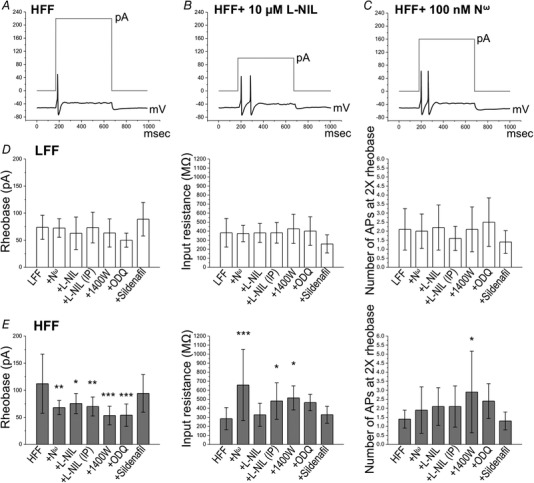Figure 2.

Inhibition of NO signalling pathway increased excitability of nodose neurons from HFF mice
Representative action potential firing elicited by 2 × rheobase current pulse (grey) in HFF nodose neurons (A), HFF+10 μm l‐NIL (B) and HFF+100 nm N ω (C). Histograms illustrating mean rheobase, input resistance and number of action potentials at 2 × rheobase in nodose neurons from LFF (D) and HFF (E) mice. Inhibition of NOS by N ω (100 nm, P < 0.01), l‐NIL (10 μm, P < 0.05), l‐NIL (i.p. 10 mg kg−1, P < 0.01) and 1400W (10 nm, P < 0.001), as well as blockade of sGC by ODQ (10 μm, P < 0.001), significantly decreased rheobase in HFF neurons. N ω (P < 0.001), l‐NIL (i.p., P < 0.05) and 1400W (P < 0.05) significantly increased input resistance in HFF neurons. 1400W (P < 0.05) significantly increased the number of action potential in HFF neurons.
